If you didn’t know it before, you certainly do now — there’s a lot of content on the web. That’s good news for those of us who are tiring of simply checking out and pretending this is all a bad dream. We want material that’s at least a bit more engaging and maybe even reminiscent of what life was like pre-pandemic.
Google Earth is a quality wormhole to fall headfirst into. You can revisit favorite fishing holes, honeymoon spots, World Heritage Sites, and more, all with a few clicks. Between each destination you fly over the planet at breakneck pace, a brilliant little accent on Google’s part (zoom out as far as possible, just for fun). We encourage you to look up some of your favorite personal places on planet Earth but in the event you need a few locales to get things swinging, start here:
Rome, Italy
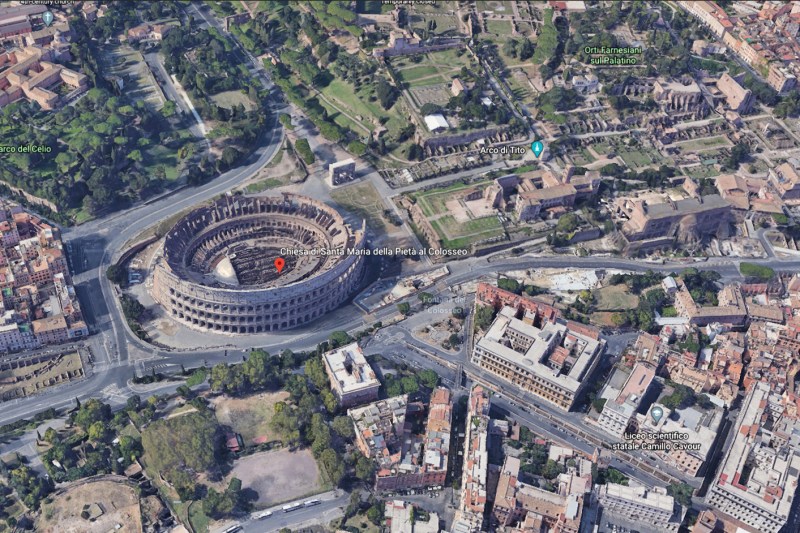
Some cities look better than others. Rome is a captivating beast and equally good from Google’s bird’s eye view thanks to the terra cotta everywhere. It’s a sea of red tiles, zig-zagging streets, and some of the best landmarks ever, starting with the Coliseum and ruins from the Roman era. It’s mesmerizing to simply hover above this ancient Italian city and witness its countless al fresco dining establishments, scooter riders, and gardens. Very much not a grid, it’s easy to get lost here.
Maui, Hawaii

Maui is the perfect size for exploring on your computer. You can scope out legendary surf spots like Jaws or delightful towns like Paia. The color of the surf by itself is enough to entertain but there’s quite a bit of diversity to the island as well, from the crescent-shaped Molokini Shoal Marine Life Conservation District to the dramatic coast of Hana.
Great Wall of China
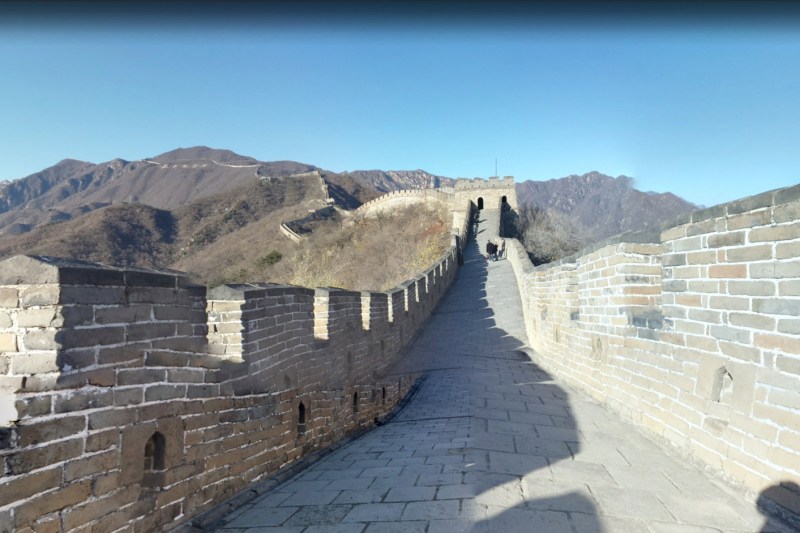
Things you can see from space are tempting choices while traveling within Google Earth. You can track much of the trajectory of the Great Wall of China, taking in just how expansive more than 13,000 miles of rock barrier really is. There’s an added coolness in the juxtaposition of something so old (7th century BC, among other centuries) being viewed in HD with futuristic technology.
Sahara Desert
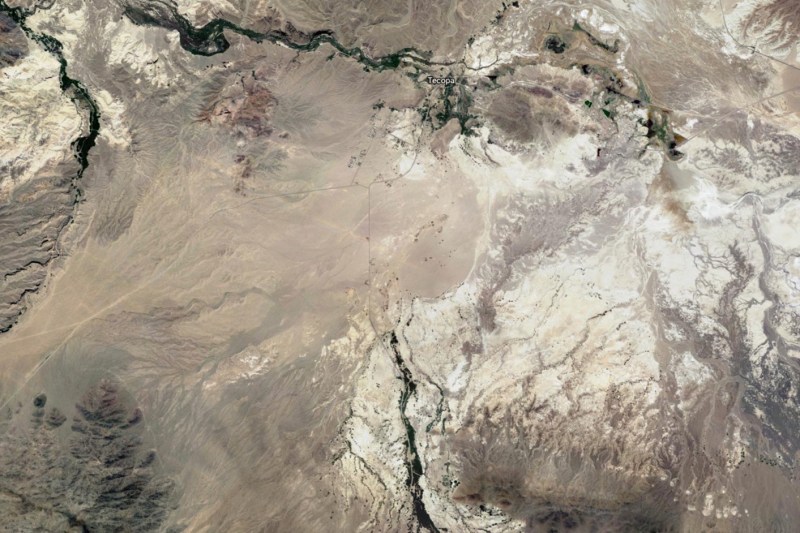
Some things are so massive they need to be taken in from space in order to truly gauge their footprint. The Sahara Desert is one of those sprawling landscapes, the planet’s largest hot-weather desert. It’s fascinating to scroll over the countless dunes and sunbaked geology. If you hunt around for a while, you might even spy an oasis or two.
Mountain Peaks
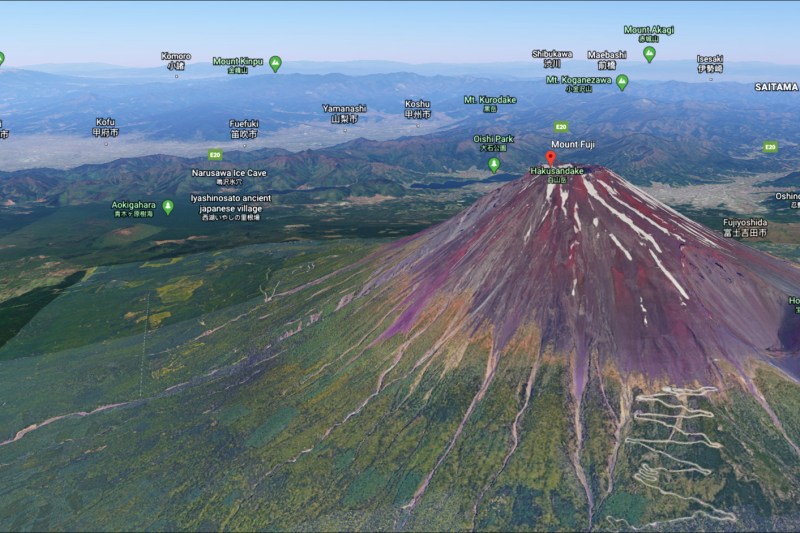
Our planet is full of great mountain peaks and many of them are Google Earth-friendly. It’s easy to feel like an explorer as you ascend iconic places like Mt. Fuji, the Himalayas, the Matterhorn, or Mt. McKinley. The most adventurous can map out mental routes for climbing these great heights, scanning for passages and even comparing what they see on the screen to real mountaineering maps. And some, like Table Mountain in South Africa and Cerro Torre in southern Patagonia, are just plain fun to gawk at from different angles.
Stadiums
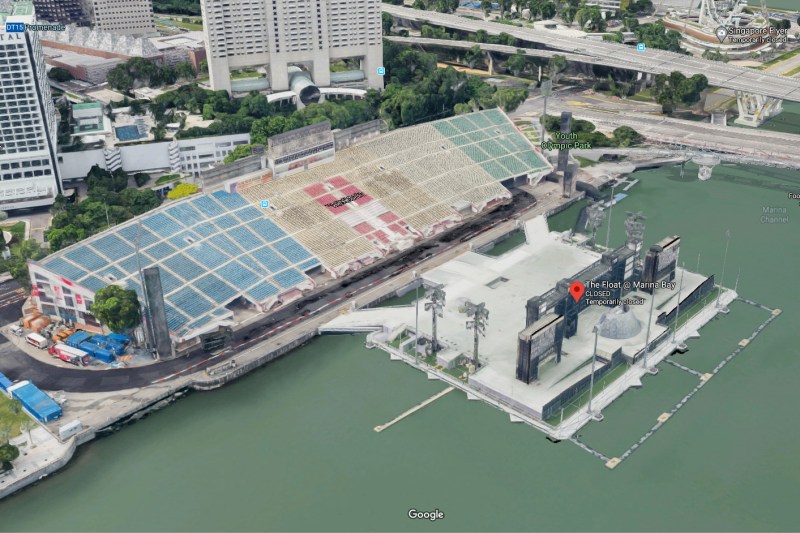
Famous sporting venues are fun to witness just in terms of scale. Many are impressively large, and look all the more so when empty (when Google happened to gather the image). Fly over to the Camp Nou in Barcelona to see where one of the world’s greatest soccer club plays or take in Lambeau Field in Green Bay, Wisconsin and see just how small-town of a franchise the Packers are. The images are sharp enough that you can practically tour the grounds or at least get a feel for the architectural details. Observe the largest floating stage in The Float at Marina Bay in Singapore or check out the impressive Stadion Energa in Poland, made of 18,000 polycarbonate plates. A fun game on the side is to try to find a stadium that happened to be caught while a game was actually happening (I’ve yet to find one).
Las Vegas, Nevada
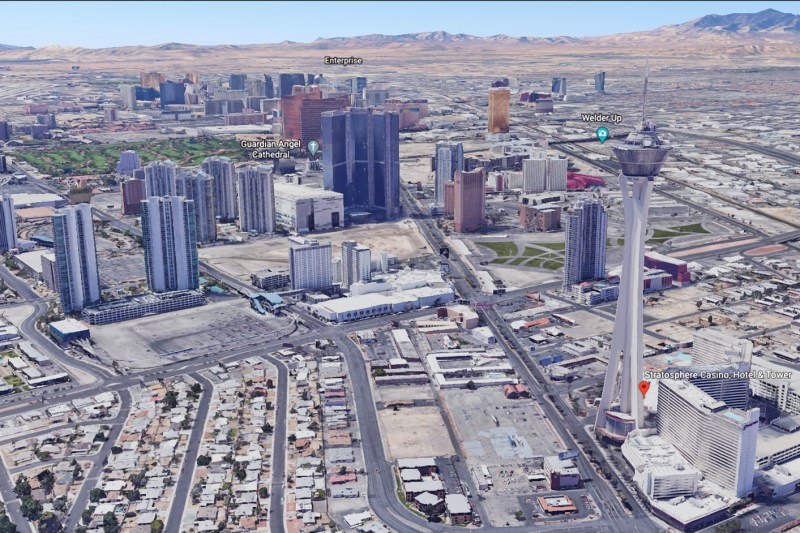
It’s been said by many a wise man: The Strip is worth seeing, at least once. While you can’t take part in the gambling and other endless debauchery Sin City usually offers, it’s still fun to view from above. Soak up the remarkable pools of the many hotels and resorts in town, check out the pyramid-shaped Luxor, or peep the Bellagio Fountains. This is a great time to mention that Google Earth offers night views of many incredible locales (which you can access via the Voyager button, under the Nature section).
Finney County, Kansas
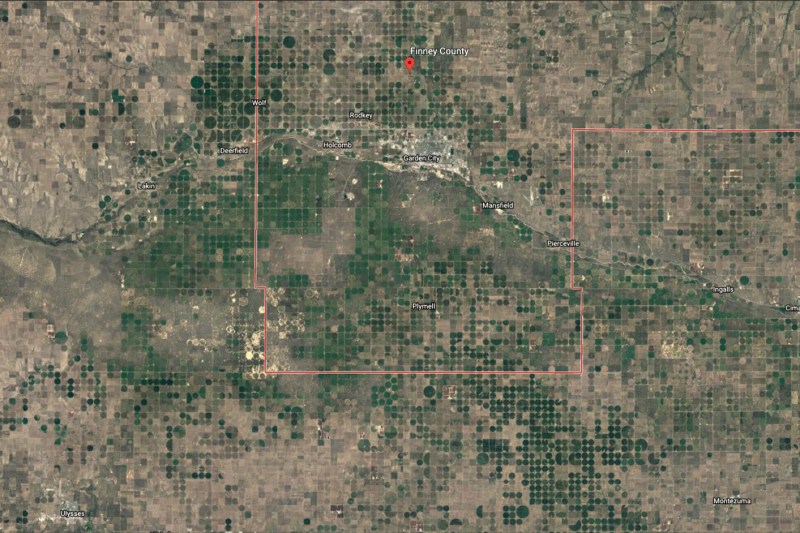
Really, that flat-as-a-pancake expanse? Yes, if for no other reason than it’s incredibly artistic. If you fly a lot, you’ve seen scenes like this throughout the Midwest. The pattern of circular crop parcels is hypnotic and fun to investigate more closely, something you can’t do from a plane. In Finney County, sorghum and other crops combine to form something truly gallery-worthy, somewhere between a hectic screenshot taken from Pacman or Pointillism.
Hidden Lands

It’s the places we know little about or that are shut off to the world that prove most irresistible sometimes. Obvious draws include North Korea, Area 51 (Nevada’s Homey Airport), and North Sentinel Island. The lattermost is home to one of the last few indigenous communities with practically zero contact with the rest of civilization. It’s a densely vegetated dot on the map with seemingly no signs of life. You can’t help but wonder what’s happening in such a place. It’s also fun to explore places that seem like they’re on the edge of the planet, like Nuuk, Greenland, or Tasmania.


